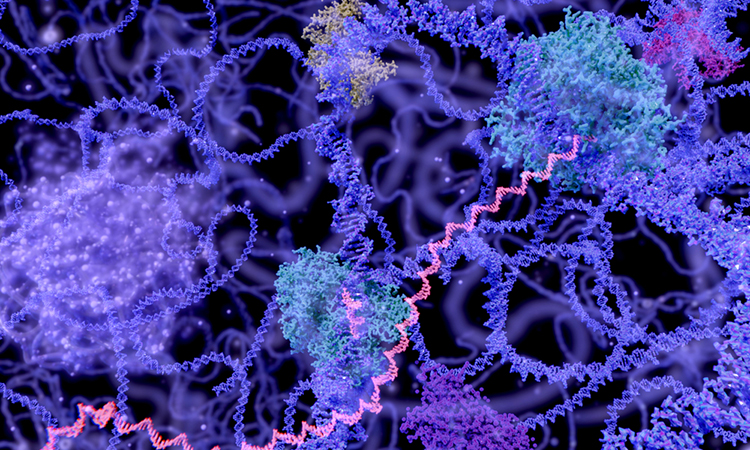Enzyme opens door to new therapeutic targets for cellular stress
Posted: 13 March 2023 | Izzy Wood (Drug Target Review) | No comments yet
The activity of enzyme ATE1, as seen by US researchers, flags misfolded proteins for destruction and is enhanced by binding iron-sulphur clusters.

A new study from the University of Maryland and Baltimore County (UMBC), US, illuminates how a previously poorly understood enzyme works in the cell. Many diseases are tied to chronic cellular stress, and this research discovered that the enzyme ATE1, plays an important role in the cellular stress response.
A better understanding how this enzyme functions and is controlled could lead to the discovery of new therapeutic targets for these diseases.
The enzyme ATE1, published in Nature Communications, belongs to a family of enzymes called arginyl-tRNA transferases. These enzymes add arginine to proteins, which often flags the proteins for destruction in the cell. Destroying proteins that are misfolded is important to prevent those proteins from wreaking havoc with cellular function. An accumulation of malfunctioning proteins can cause serious problems in the body, leading to diseases like Alzheimer’s or cancer.
ATE1 binds to clusters of iron and sulphur ions, and increases two- to three-fold when it is bound to one of these iron-sulphur clusters. When the researchers blocked cells’ ability to produce the clusters, ATE1 activity decreased dramatically. They also found that ATE1 is highly sensitive to oxygen, which they believe relates to its role in moderating the cell’s stress response through a process known as oxidative stress.
In the lab, the team added the raw materials for creating iron-sulphur clusters to a solution with ATE1, and the results showed that ATE1 did indeed bind the clusters.
The fact that the enzyme binds the clusters at all was interesting and new, “but then we also asked if that’s affecting the enzyme’s ability to do what it does,” said UMBC’s Aaron T. Smith. The answer, after more than a year of additional experiments, was a resounding yes. In the process, Smith’s group also determined the structure of ATE1 in yeast (without the cluster bound to it).
Around the same time, another group also published a slightly different ATE1 structure. The other group’s structure had a zinc ion bound in place of the iron-sulphur cluster. With the zinc in place, one key amino acid is rotated about 60 degrees. It might seem inconsequential, but Smith believes that rotation, which he presumes is similar with the cluster, is the key to the cluster’s role in ATE1’s function.
The rotated amino acid is directly adjacent to where a protein would interact with ATE1 to be modified, ultimately flagging it for degradation. Changing the angle of that amino acid changes the shape of the location the protein would bind “very subtly,” but changes its activity “more than subtly,” Smith explained.
Smith would also like to explore how other metals, beyond zinc and the iron-sulphur cluster, may affect the enzyme’s activity. Additionally, his lab is working to determine the structure of ATE1 in an organism other than yeast and to confirm the ATE1 structure with an iron-sulphur cluster bound.
All these steps will build up a clearer picture of how ATE1 functions and is regulated in the cell. Smith also says he believes proteins that so far have not been shown to bind iron-sulphur clusters may indeed rely on them.
Related topics
Molecular Biology, Molecular Targets, Targets, Therapeutics
Related conditions
Alzheimer's, Cancer, cellular stress
Related organisations
University of Maryland and Baltimore County (UMBC)
Related people
Aaron T. Smith







